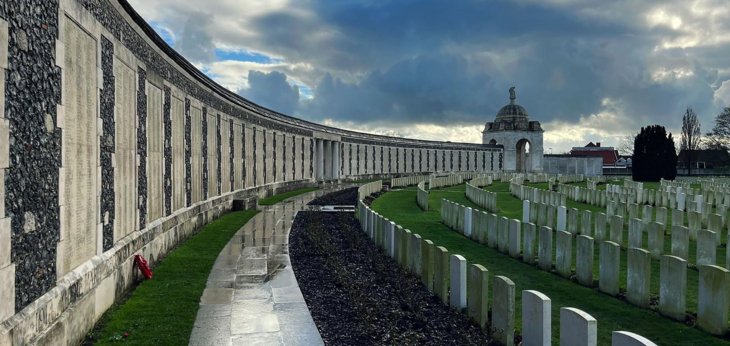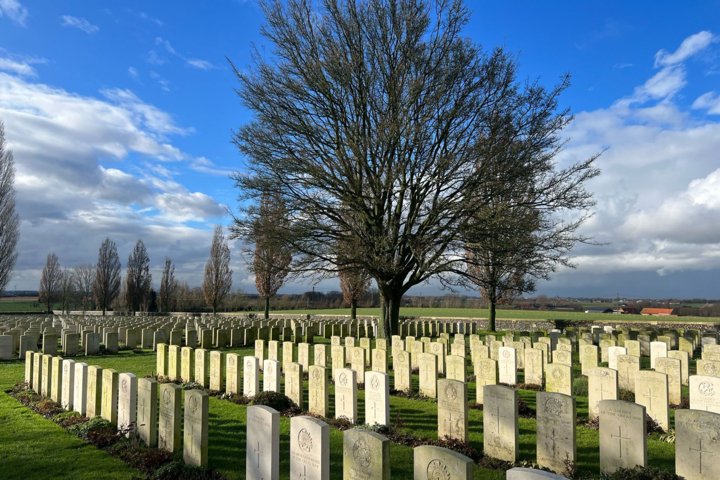Pupils are celebrating today after receiving an astonishing 43 offers from either the University of Oxford or the University of Cambridge – the highest number in the College’s history. We are immensely proud of our pupils - a huge congratulations!


During the half-term holiday, 60 Fourth Form pupils embarked on a two-day trip to Ypres.
Just past the border between France and Belgium, they visited Lijssenthoek, where around 11,000 soldiers of the Great War are buried. There, the pupils learnt about some of the key features of a Commonwealth War Cemetery, such as the Cross of Sacrifice.
They saw the graves of British, French, Indian, Australian, Canadian, German, Chinese and others, including one woman, nurse Nellie Spindler, and found out more about their experiences. They paid their respects at the graves of two former Brighton College pupils, George Knowles (Du. 1914-5) and Harold Wright (Sc. 1906-8), who once walked around our school campus before enrolling to fight, and ultimately dying in the First World War.
Their next stop was the Poperinge cells and execution post, where soldiers sentenced to death for desertion or so-called cowardice were taken to be shot at dawn. Then, they explored part of the Ypres battlefields, in particular the remains of Hill 60, which was a huge tactical target for both sides (involving tunnelling and mining), as it was unusually high ground.
After dinner, they attended the ‘Last Post’ ceremony at Menin Gate - soemthing that has been held almost daily since 1927. After breakfast the next morning, they set off for the Railway Dugouts, on the site of a wartime advanced medical dressing station, and found the resting place of another Old Brightonian, Arthur Hodge (Sc. 1911-4).

This cemetery was interesting because it had been heavily shelled during the War, which meant that many of the bodies buried there have been lost. Next, they walked through the thick mud of former battlefields to the Hooge Crater and its museum, where they walked a German trench, tried on military uniform and kit, and discovered more about the gradual movement of the front line on the Western Front during the war.
After a spot of lunch in the museum café, we headed to Tyne Cot Cemetery, the largest Commonwealth cemetery in the world. It contains around 12,000 soldiers, but the identities of only around third of these are known. They found the names of two former Brighton College boys whose bodies were never found: William Rolph Botting (Ha. 1905-13) and Leslie Scott (Ch. 1898-9).
